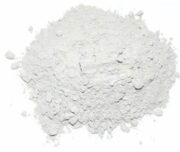Sepiolite nanoclay as a reinforcing filler in the NR/BR matrix
by Tapas R. Mohanty, P.K. Neeraj, S. Ramakrishnan, S.K.P. Amarnath, Daniele Lorenzetti and P.K. Mohamed, Apollo Tyres Ltd.
Effects of partial replacement of silica and carbon black by sepiolite nanoclay in an NR-BR matrix is investigated.
Due to increasing demand from vehicle manufacturers, as well as continuously changing stringent
regulation norms, tire manufacturers are facing many challenges in optimizing tire performance
properties. The major challenge in the tire industry during the current century is to optimize the socalled magic triangle, which is a balance between three contradictory properties, i.e., rolling resistance (RR), wet skid resistance and abrasion resistance. Optimizing ride (comfort and handling),
along with the properties mentioned above, is also another big concern for the tire industry.
Sustainability, as well as future disruptive technologies like electric vehicles (EV) and durable ultralow rolling resistance, are some of the most critical requirements for tires.
There are various ways of optimizing tire compound properties, which ultimately influences the tire
performance. One of the approaches is to select the right type of reinforcing filler and dosage in the
rubber compound. Due to its high reinforcing ability, carbon black (CB) is a commonly used filler in
the tire industries. CB reinforced compounds provide better abrasion resistance and mechanical
properties, but some further optimization in dynamic properties (rolling resistance, traction, ride
and handling) is always a demand from the tire industry. Silica is another commonly used
reinforcing filler in rubber compounds to achieve better dynamic properties for tire applications.
However, a need remains to optimize the dynamic properties of tires further. Therefore, new
generation fillers are required which can provide lower hysteresis while maintaining the desired
level of reinforcement.
Organo-modified clays in polymer-clay nanocomposites opened a new horizon in the area of
elastomer reinforcement (refs. 1-6). Over the last few decades, nanoclays (NC) have been potentially
used as a reinforcing filler in various elastomer matrices, due to the high aspect ratio of NCs. These
nanoclays provide a wide variety of property improvements at low loadings (ref. 7). It is well known
that layered silicate nanoclays consist of layers of tetrahedral silicate and octahedral hydroxide
sheets. They mainly include montmorillonite (MMT), vermiculite (VMT), rectorite (REC), kaolinite clay
(KC), bentonite, sepiolite, etc. In earlier research, the effect of various types of organically modified
montmorillonite (MMT) nanoclay on the mechanical, dynamic and adhesion properties of natural
rubber and styrene butadiene rubber pertaining to tire applications (refs. 4-6) was studied. Sepiolite
nanoclay is also another potential filler which can be used in the rubber matrix for reinforcement.

